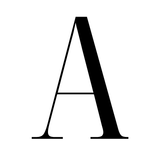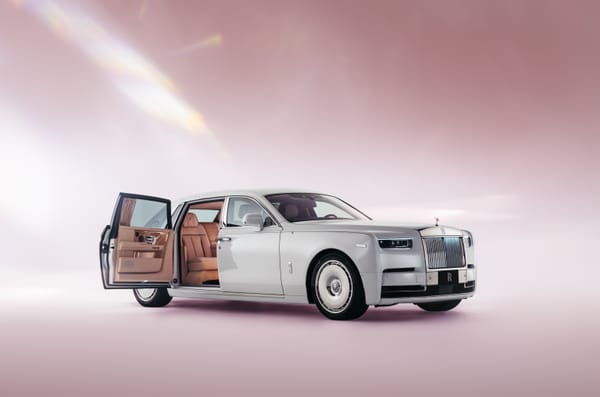Artist Ai Weiwei and His Life of Defiance
Ai Weiwei is one of the most influential and controversial contemporary artists and activists in the world today. Ai has shaped the global art scene and become a potent voice for human rights, freedom of expression, and resistance against authoritarianism.

Ai Weiwei was born in Beijing in 1957. His work, spanning sculpture, installation, photography, film, and architecture, is deeply rooted in personal history and collective trauma, making it a powerful critique of political, social, and cultural systems.
Ai Weiwei’s unique blend of art and activism has earned him international fame. Still, it has also placed him at odds with the Chinese government, which has subjected him to censorship, surveillance, arrest, and imprisonment. His life and career reflect the complex relationship between creativity and political dissent, art and power, and tradition and modernity in contemporary society.
Ai Weiwei was born into a family of intellectuals and artists, but his early life was shaped by hardship and exile. His father, Ai Qing, was one of China’s most prominent poets but was branded an enemy of the Communist Party during the Anti-Rightist Movement in the late 1950s. As a result, the family was sent into internal exile in the remote province of Xinjiang, where they lived in harsh conditions for years—this period of political persecution had a profound influence on Ai Weiwei’s worldview and his eventual commitment to challenging oppressive regimes through his art.
In 1976, after the death of Mao Zedong and the end of the Cultural Revolution, Ai returned to Beijing. He joined the Beijing Film Academy, where he studied animation and became part of an underground artistic movement that sought to break free from the rigid confines of socialist realism. In 1981, Ai moved to the United States, spending over a decade in New York, where he was exposed to Western modern art and the work of artists like Marcel Duchamp, Andy Warhol, and Jasper Johns. This period significantly shaped his conceptual approach to art, especially his interest in ready-made objects and the role of the artist as a provocateur and critic.
Ai returned to China in 1993, at a time when the country was undergoing rapid economic and social changes. The Chinese government’s grip on political power remained tight, but the opening of markets created new opportunities for cultural expression. Ai Weiwei quickly became a central figure in Beijing’s burgeoning avant-garde art scene.
In 2000, Ai co-curated an influential exhibition called "Fuck Off", which challenged the official art scene’s conservatism and introduced a new generation of rebellious artists. Ai's work began to gain international recognition, and his role as both an artist and a dissident started to define his identity on the global stage. His deep scepticism of authority, combined with his innovative use of materials and forms, set him apart from his peers.
Major works and themes
Ai Weiwei’s art is highly conceptual and often revolves around themes of power, cultural heritage, mass production, and human rights. His works frequently incorporate traditional Chinese materials and craftsmanship, but he subverts their meanings to comment on modern political issues. Below are some of his most significant works:
1. Dropping a Han Dynasty urn (1995)
One of Ai Weiwei’s earliest and most provocative pieces, this performance and photographic work shows the artist intentionally dropping and smashing a 2,000-year-old Han Dynasty urn. The destruction of a priceless cultural artefact shocked many, but Ai used the act to challenge the reverence for tradition and authority in both art and society. By destroying an ancient object, Ai was making a statement about the role of art in questioning accepted values and how the new sometimes emerges through the destruction of the old.

2. Sunflower Seeds (2010)
This large-scale installation, exhibited at the Tate Modern in London, consists of 100 million hand-painted porcelain sunflower seeds crafted by over 1,600 artisans from Jingdezhen, a town known for its porcelain production. The work addresses themes of mass production, individuality, and collective labour, as well as China’s complex relationship with Western consumer culture. Sunflowers were also a symbol of Mao Zedong’s leadership, representing the people’s devotion to the Communist Party. By creating a sea of indistinguishable seeds, Ai commented on the loss of individuality in contemporary society and the way authoritarian regimes manipulate mass sentiment.

3. Remembering (2009)
This installation was created as a memorial for the thousands of schoolchildren who died in the 2008 Sichuan earthquake due to poorly constructed school buildings. Ai Weiwei collected 9,000 backpacks and arranged them on the façade of Munich’s Haus der Kunst, spelling out a sentence from a grieving mother: “She lived happily for seven years in this world.” The piece was a direct criticism of the Chinese government’s corruption and negligence, which had led to the tragedy. Ai also led an online investigation, documenting the names of the children who had died, further highlighting the lack of accountability in the government’s response to the disaster.

4. Forever Bicycles (2013)
This massive installation features thousands of bicycles stacked and layered to create a visually intricate and seemingly endless structure. The work refers to the Chinese brand "Forever" bicycles, a ubiquitous symbol of daily life in China, particularly during the 20th century. While the bicycles evoke memories of communal life, the overwhelming scale of the installation suggests the dehumanising effects of mass production and the pressures of modernisation. Ai Weiwei plays with the idea of freedom and mobility, questioning whether progress has truly liberated people or merely bound them to new forms of control.

5. Human Flow (2017)
In addition to his work in visual art, Ai Weiwei has also ventured into documentary filmmaking. Human Flow is a documentary that explores the global refugee crisis, capturing the stories of displaced people across 23 countries. The film is a testament to Ai’s commitment to human rights and social justice, using his platform to raise awareness of the plight of refugees and the humanitarian challenges facing the world.

While Ai Weiwei’s art has earned him international acclaim, his activism has made him a target of the Chinese government. Over the years, he has been a vocal critic of China’s lack of transparency, censorship, and human rights abuses.
In 2008, after the Sichuan earthquake, Ai’s public investigation into the deaths of schoolchildren led to increased government scrutiny. His blog, which he used to post about his findings and criticise the government, was shut down in 2009. However, Ai continued to speak out, using platforms like Twitter and Instagram to bypass Chinese censorship.
In 2011, Ai Weiwei was detained for 81 days without charges, leading to international condemnation. Although he was released, he was placed under surveillance, and his passport was confiscated, preventing him from travelling abroad for several years. During this period, Ai became a symbol of resistance against state oppression, and his case attracted widespread support from human rights organisations, artists, and political leaders worldwide.
Despite these challenges, Ai Weiwei has continued to produce art that confronts issues of state control, individual freedom, and global injustices. His work reflects a belief that art has a role to play in societal change and that artists have a responsibility to speak truth to power.
Ai Weiwei’s influence extends far beyond the art world. He is a global figure of resistance against authoritarianism, a champion of human rights, and an advocate for freedom of expression. His ability to merge art with activism has inspired a generation of artists and activists who see creativity as a form of political engagement.
In a world where political dissent is increasingly met with repression, Ai’s work challenges the status quo and calls attention to the ways art can be a force for change. Whether through monumental installations, performance art, or digital activism, Ai Weiwei’s legacy is one of defiance, courage, and an unwavering commitment to justice.
In many ways, Ai represents a new kind of artist—one whose work transcends the boundaries of galleries and museums, engaging directly with the urgent political and social issues of our time. His art serves as a reminder that in the face of oppression, the creative spirit remains a powerful tool for resistance and change.
Ai Weiwei’s life and career are a testament to the power of art as a form of activism. From his early days as an underground artist in Beijing to his rise as an internationally recognised figure, Ai has consistently used his platform to challenge authority, question accepted norms, and advocate for the marginalised. His work blurs the line between art and politics, emphasising that the two are inextricably linked in the pursuit of a more just and free society.
Ai’s ability to combine traditional Chinese materials with contemporary political concerns has made him a unique voice in the global art scene, while his relentless activism has placed him at the forefront of the fight for human rights. Through his art, Ai Weiwei continues to inspire millions around the world to think critically about power, justice, and the role of the individual in shaping society’s future.





